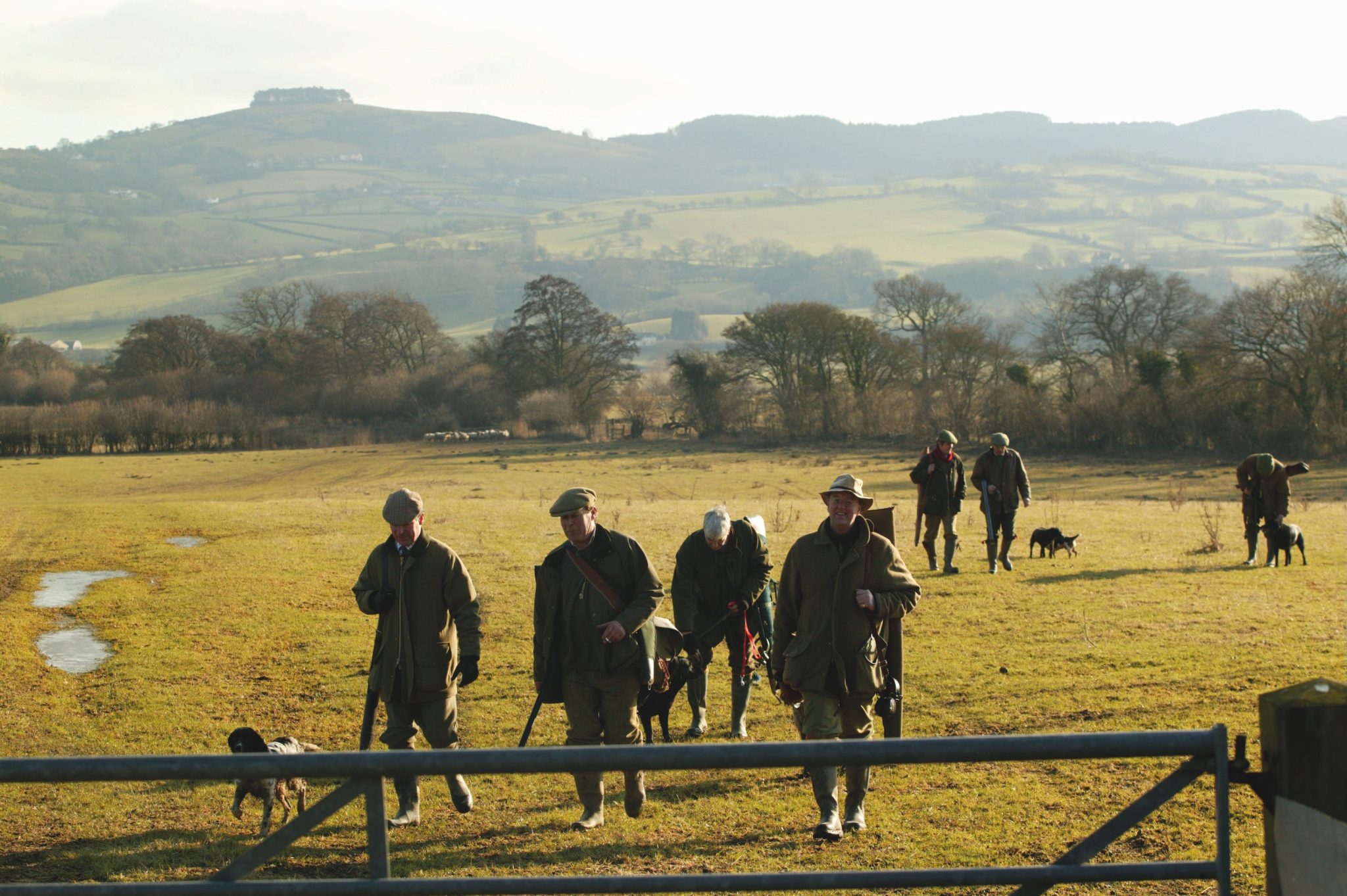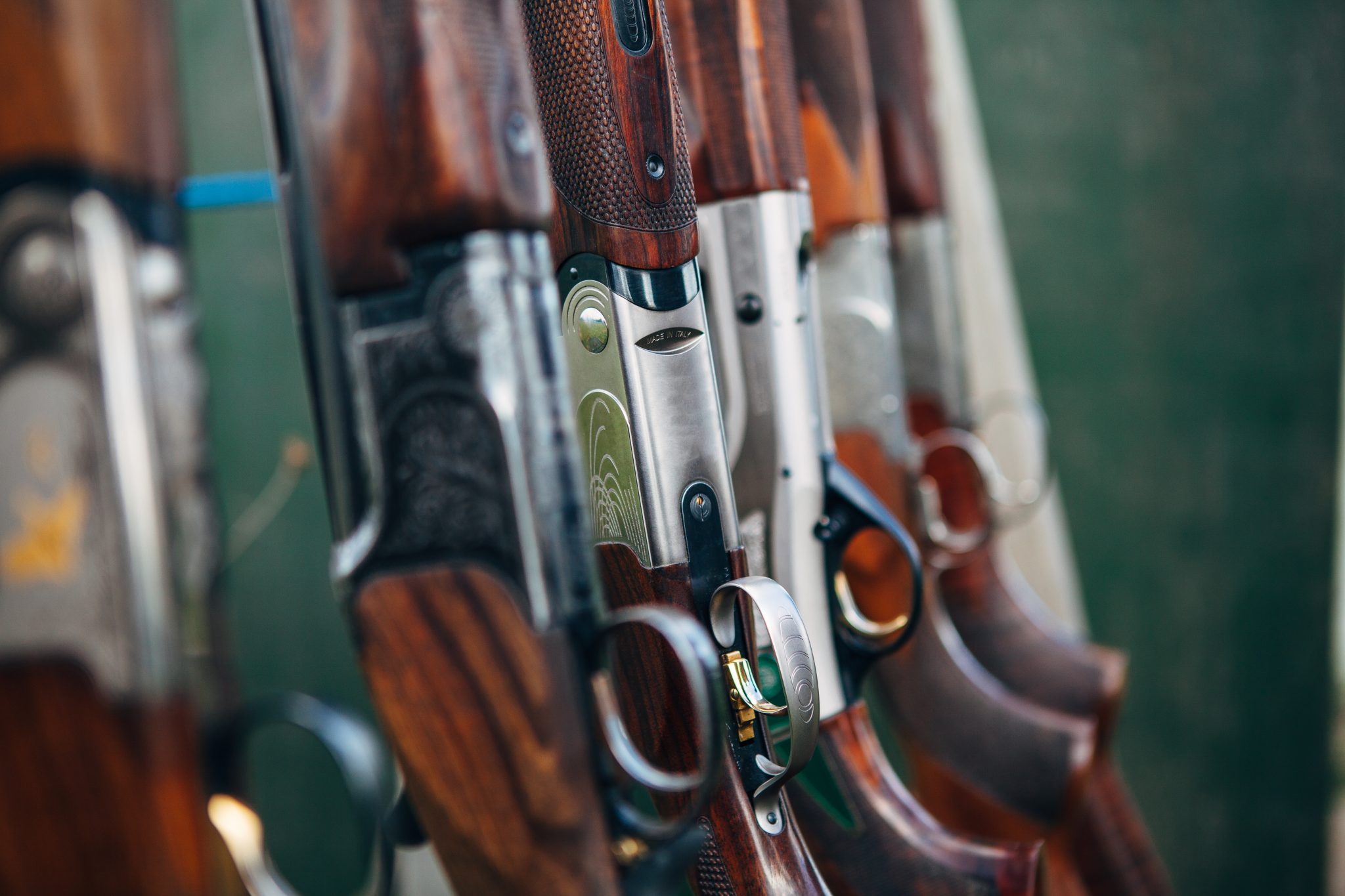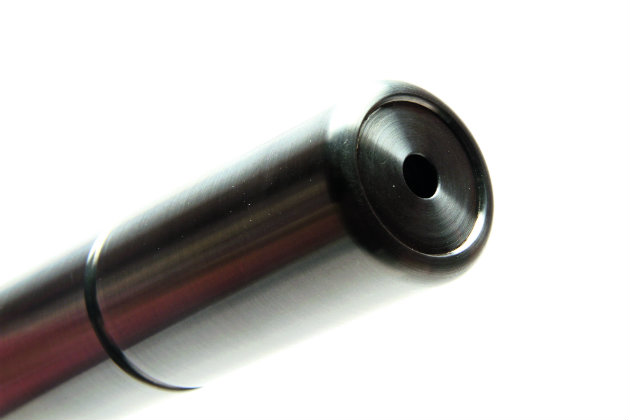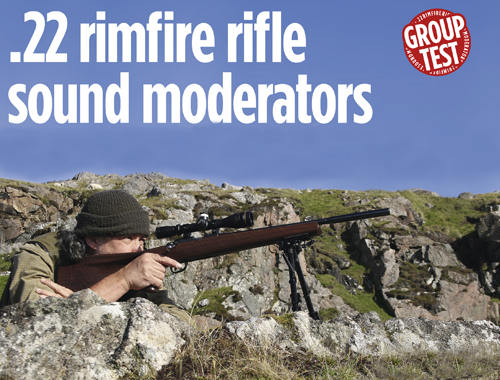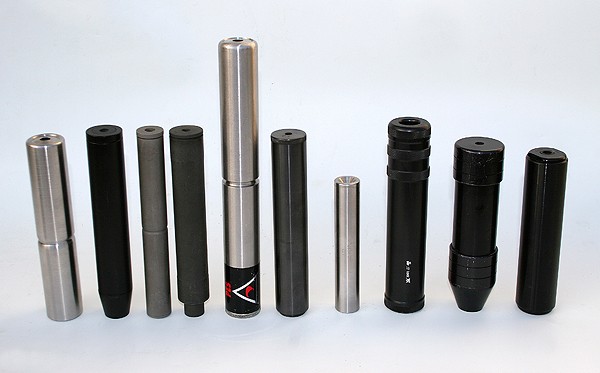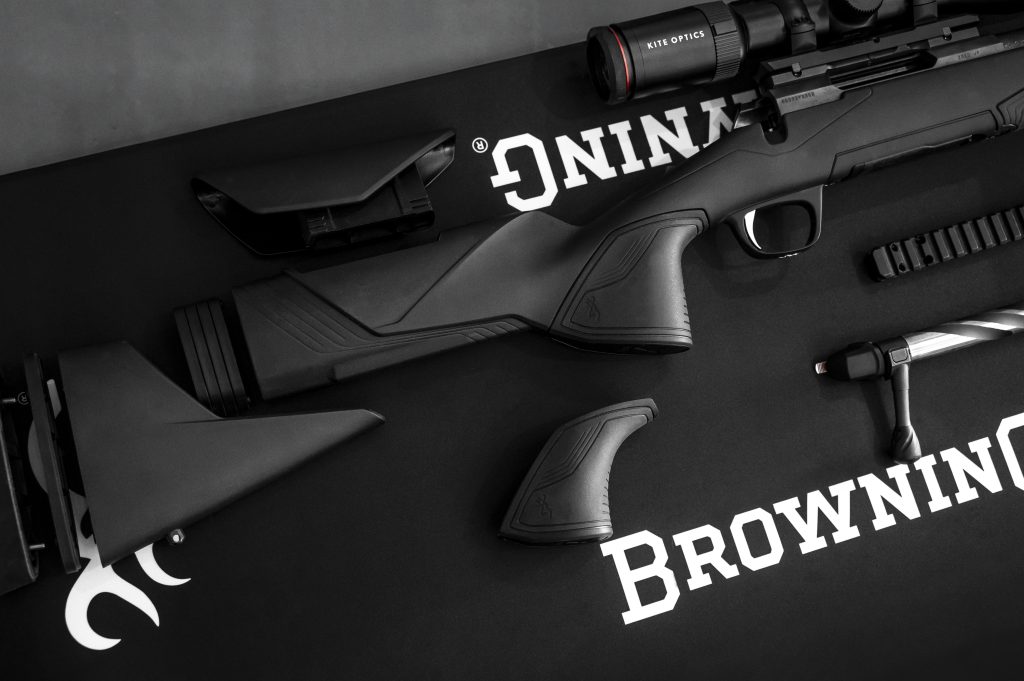If you are using a .22LR rifle, sound reduction is only required for subsonic ammunition. It is quite straightforward to…
Win CENS ProFlex DX5 earplugs worth £1,149 – enter here
How to care for your sound moderator
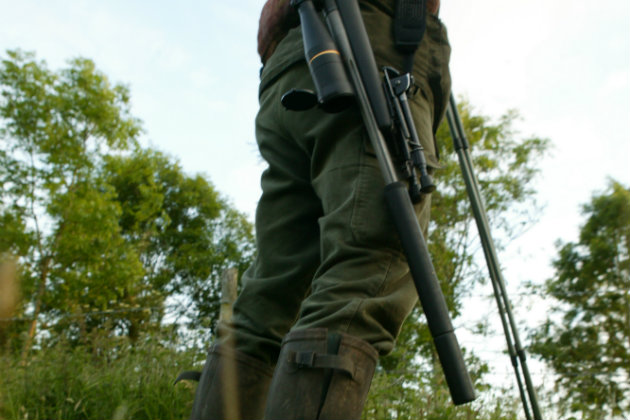
If not, you will have a badly fitted and sometimes dangerous moderator and suffer the consequences of moderator failure long before its sell-by date. It constantly amazes me that some people never clean their rifles, let alone any ancillary equipment – they are just stacking up trouble for the future.
Regarding correct fitment, do not be dissuaded from a proper threading job just because you cannot afford it. Most of the cheaper threading jobs can leave your moderator either unsecured or misaligned – and certainly can be detrimental to accuracy.
Threading and alignment
Problems occur when threading jobs are incorrectly carried out.
To achieve a proper thread on a barrel muzzle, you have to consider that you need to keep the moderator aligned with the bore axis and not the outside diameter of the barrel. Why?
Well, some rifle bores do not run exactly true through the barrel and so a thread cut square to the outside diameter will often have the moderator canted off in one direction, causing the potential problem of a bullet, on exiting the bore, having a higher probability of contacting one of the internal moderator’s baffles, with disastrous consequences.
This is particularly relevant with the new trend for tighter and tighter baffle dimensions – smaller apertures through which the bullet passes to maximise noise reduction. When you get a barrel threaded, make sure the gunsmith understands proper alignment.
Also, if the crown of the barrel has been machined (common in barrel-reduction cases), check it has been recrowned properly. Again, I have seen threads that are good but the crown still has rough saw marks. No rifle in this state will shoot, believe me. Check, too, the thread has no residual cutting swarf and that all the sharp edges are taken off.
Undercut and size
Another important feature is the thread is undercut at its base, allowing the moderator to sit square to the face of the barrel, with proper and equal contact.
If not, the moderator will have a tendency to want to lean or tension to one side, again very non-beneficial and dangerous. This next point may seem simple, but you should ensure the gunsmith cuts the correct thread size to match your own moderator. There are many thread size options open to the potential moderator virgin, but I always choose the largest that can be cut on the barrel diameter while maintaining enough shoulder for the moderator to butt up to.
You can choose to go for a coarser thread pitch (ie, ½ UNF 20Tpi instead of ½ UNF 28Tpi), but a coarser pitch requires less turning of the moderator to take it off. Many moderators come with metric threads, like the M17x1, that suit a larger barrel diameter and many possess a mounting shoulder to align the moderator to the barrel face.
This is all fine as long as the area is kept clean and not allowed to corrode. Once cut, ask to have the newly threaded sections reblued, otherwise corrosion will start sooner than you think. At the same time, have a protective thread cap made so the threads are protected when the moderator is not fitted.
Snug, but not too snug
A thread should have a snug fit to the moderator, but not so tight you exert any real force. It should engage the first section and glide down the threads using a single hand. The contact with the muzzle shoulders, if cut square, is enough to keep it from unscrewing and ensures perfect alignment to the bore.
This factor is just as important for a muzzle-mounted moderator as it is for an over-the-barrel model. In fact, with moderators that sleeve down the barrel, the rear supporting bush can also be a contentious issue.
If you fit an over-the-barrel moderator to your rifle and look at the gap at the rear of the moderator with the bush removed, you should see a perfect concentric equal diameter between it and the outside diameter of the bore. If you do not, then the thread is on the skew, so when you fit the rear bush and tighten the moderator fully, the barrel will be tensioned between the muzzle and this point, as the moderator tries to straighten the misalignment.
This is not good for the rifle and certainly detrimental to accuracy. If there is proper alignment, then a tight rear bush is beneficial; if not, a couple of thou clearance would be better suited.
I know this may all sound a bit much, but you can ruin a good rifle very simply and quickly by having a bad threading job done.
Ten of the best .17HMR moderators
Silence is golden where pest control is concerned, so after testing full-bore and .22 rimfire moderators Bruce Potts turns his…
Erosion and corrosion
Another area of concern is whether or not you take your moderator off after you have shot it, or whether you are one of these people who puts it straight back in the gun cabinet after the day’s shooting. More problems are caused to rifles’ bores from not taking off the moderator than most other damage.
When you shoot the rifle, all that burnt powder and very corrosive gas residue is left in the moderator, either stuck to the baffles or loose in the body. The main products from combustion are carbon monoxide, water, carbon dioxide and nitrogen.
These can start to corrode the moderator from the inside out, but if the can is left on the rifle and put away standing upright, the moisture and corrosive mixture can and will migrate down into the first section of the barrel. If the rifle is left there unshot for a while, then pitting and rust to the internal surface of the bore will occur.
Obviously this is not a good scenario and will certainly affect the accuracy of the rifle concerned and some situations can get so bad that a moderator and barrel literally become fused together by corrosion.
Common sense solutions
- After every shooting session take the moderator off the rifle when you get home prior to cleaning.
- Remove the can and let the rifle and moderator come to the same equilibrium or temperature as the room you are cleaning it in. Otherwise, condensation will form on the components and exacerbate the corrosion problems.
- At room temperature, wipe off any external water, muck and burnt gases or powder and then clean the rifle’s bore as normal.
- The moderator, if it is a sealed unit, can be gently knocked on a table-top to loosen any residue debris but, more importantly, before you put it away or back on a rifle, you should oil the interior surfaces to help eliminate corrosion.
- You can use Break Free or similar light gun oil, which leaves a fine protective film residue. Yes, the first couple of shots will smoke, but better that than a rotten moderator. If your moderator comes apart, disassemble and wipe out any moisture and clean off residual burnt powder and lightly lubricate it.
- You may think that all this on-and-off routine is going to change the zero on the rifle. Provided the threads are lightly greased with Moly Slide or Copa Slip, I have found little change of impact of the shot if a moderator is re-assembled correctly after cleaning.
- Problems come from reassembling moderators with separate baffles in the wrong order, which can change the weight distribution, influencing barrel vibrations and thus impact. Or, if the moderator is screwed on at a different tension, though this only really happens if the thread is not undercut and there is no obvious stop to the tightening process, or if the thread has become damaged, or muck stops the moderator sitting properly on the muzzle face.
- It’s not a bad idea to scribe a reference mark on the barrel and moderator to check correct alignment, so any disparity will become obvious.
- The actual material used in the construction of the moderator can lessen or greatly increase corrosion problems.
- Aluminium-constructed cans, though lightweight, can suffer from gas and flame cutting, resulting in erosion of the baffle edges and therefore loss of effectiveness. Also, aluminium on aluminium joints can fuse together and make disassembly almost impossible in some cases.
- Similarly, a light steel-skinned moderator can be prone to rusting internally and externally, so keep it clean. Moderator covers can muffle noise from foliage rubbing against the can and help repel moisture – but make sure no water gets under the cover otherwise corrosion can begin unchecked.
- If nothing else, next time you shoot your rifle and moderator combination, take it off after use, which will at least help stop corrosion starting at the crown and rifling of the barrel. But, if you spend a little time and effort in moderator care then your rifle/moderator outfit should give you years of trouble-free service.
Related Articles
Get the latest news delivered direct to your door
Subscribe to Shooting Times & Country
Discover the ultimate companion for field sports enthusiasts with Shooting Times & Country Magazine, the UK’s leading weekly publication that has been at the forefront of shooting culture since 1882. Subscribers gain access to expert tips, comprehensive gear reviews, seasonal advice and a vibrant community of like-minded shooters.
Save on shop price when you subscribe with weekly issues featuring in-depth articles on gundog training, exclusive member offers and access to the digital back issue library. A Shooting Times & Country subscription is more than a magazine, don’t just read about the countryside; immerse yourself in its most authoritative and engaging publication.




